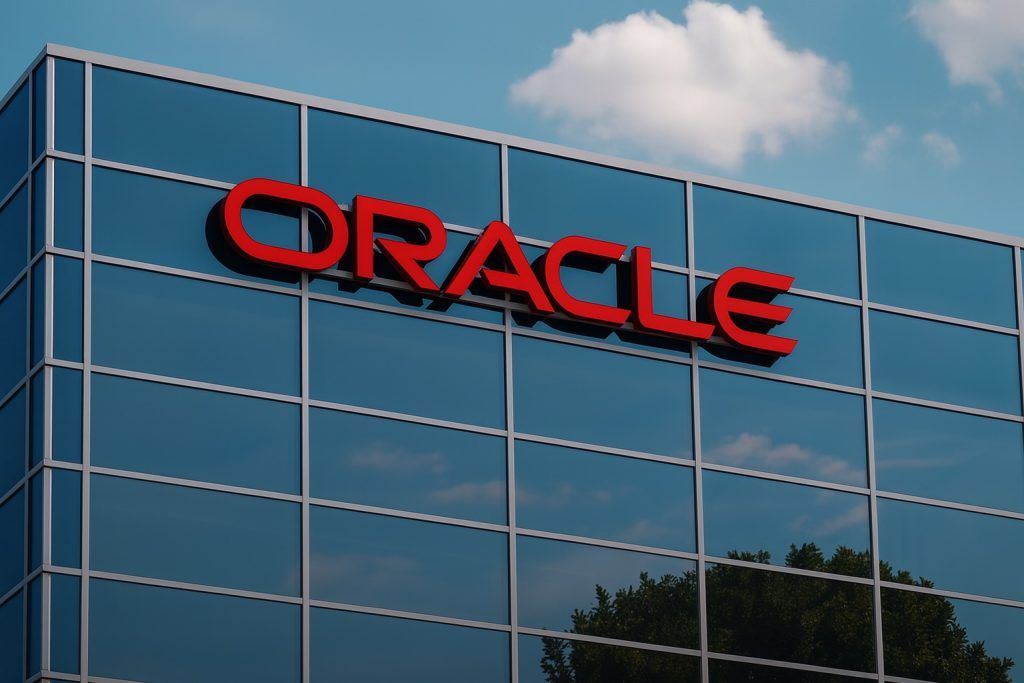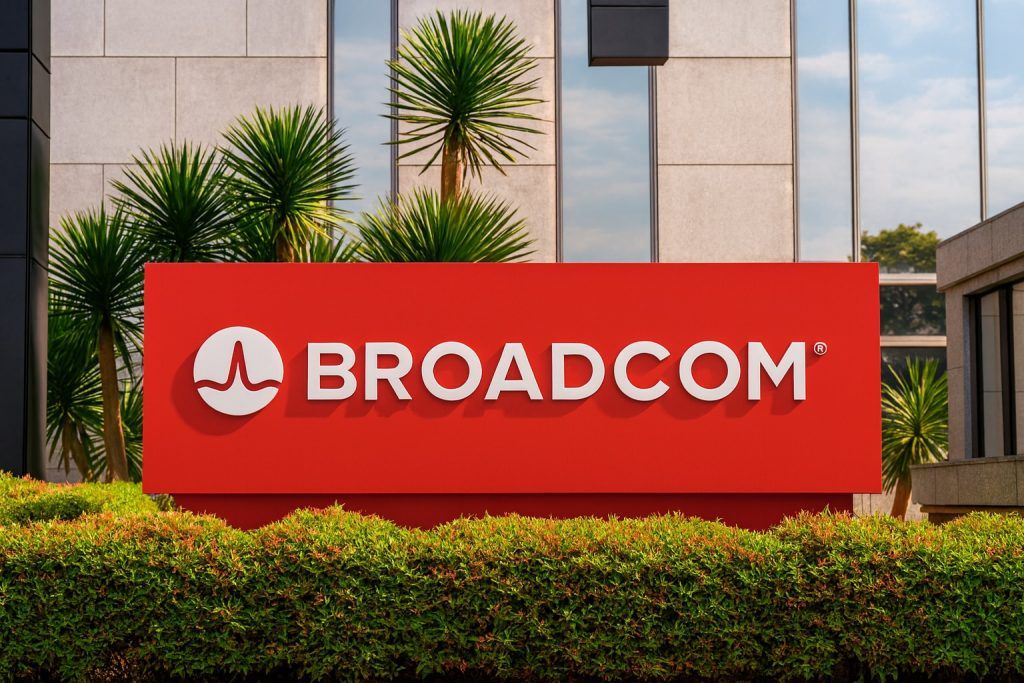- Price & Market Cap (Oct 24, 2025): AMZN closed around $224.35 (up +1.5% on Oct 24) [1], within a 52-week range of $161–$242 [2]. The market capitalization is roughly $2.37 trillion [3] [4].
- Year-to-Date Performance: The stock is nearly flat on the year (up only a few percent) [5], markedly lagging the broad Nasdaq (+15–20%) [6] [7]. Amazon is the weakest performer among the “Magnificent Seven” tech giants so far in 2025 [8].
- Recent Moves: An AWS outage on Oct. 20 briefly knocked out thousands of websites, but Amazon’s rapid fix led to gains instead of losses (stock jumped ~1.6% that day) [9]. In late Sept. Amazon agreed to a $2.5 billion FTC settlement over Prime cancellation practices [10], which analysts say “removed [a] major overhang” on the stock.
- Growth Engines: Amazon’s high-margin businesses are firing. In Q2 2025 AWS revenue rose ~17% year-over-year to $30.8 billion [11] [12], and its advertising sales jumped ~22% [13] [14]. These segments boast ~30–35% profit margins and helped Amazon become the world’s #3 digital ad platform [15] [16]. Meanwhile, e-commerce sales continue mid–double-digit growth (online retail +11% in Q2) [17].
- Earnings Outlook: Amazon reports Q3 2025 results on Oct. 30. Wall Street consensus expects about $1.57 EPS on $177–178 billion revenue [18] [19] (roughly +10–13% vs. last year). Management guided $174–179.5B in Q3 sales (10–13% growth) [20] [21]. Analysts forecast robust holiday-season growth driven by AWS, advertising, and consumer sales.
- Analyst Sentiment & Targets: Nearly all analysts are bullish on AMZN. In fact, 45 of 46 covering Amazon rate it a “Buy” or Strong Buy [22] [23]. The average 12-month price target is in the mid-$260s (about +20% upside) [24] [25]. Major firms have raised targets: Goldman Sachs calls AMZN a “Top Pick” with a $275 target [26], Wells Fargo is overweight at $280 [27], and Mizuho’s first call was $300 [28]. TipRanks and Stifel Nicolaus analysts also boosted their targets (Stifel’s Mark Kelley to $269 from $260) [29] [30]. KeyBanc even set a $300 price target, arguing the market is “too negative” on AWS and underestimates Amazon’s growth [31]. TipRanks notes consensus EPS of $1.57 and consensus 12-month targets implying roughly +20–25% gains [32] [33].
- Risks & Regulations: Amazon still faces regulatory and competitive headwinds. It is defending a major FTC antitrust lawsuit filed in 2023, even as the recent $2.5B FTC settlement eased one legal overhang [34] [35]. Amazon has also contended with EU antitrust probes (e.g. an Italian court recently halved a prior fine) [36]. Labor pressures (warehouse union drives, new labor laws) remain an issue as Amazon recently announced $1B in U.S. pay raises and benefits [37]. Competition is intensifying: Microsoft’s Azure and Google Cloud are growing much faster (recently +39% and +32% YoY) than AWS (+17–18%) [38] [39], and rivals like Walmart are beefing up e-commerce. Still, Amazon retains ~38% share of U.S. online retail (vs. ~6–7% for Walmart) [40].
Stock Performance in Context
After peaking near $242 in Feb 2025, Amazon’s stock has been under pressure. A tech sell-off in late Q2 and some profit-taking pulled AMZN down into the low-$210s over summer. By mid-October it recovered to the mid-$210s (around $216–217 on Oct. 14) [41]. Its recent bounce was supported by key technical levels (holding above ~$210) [42] [43]. As of Oct 24, Amazon is trading around $224 (after-hours data shows ~$224.35) [44]. The day’s trading volume (~18.7M shares) was below summer peaks, but notable moves on news-driven days. Overall, AMZN’s price is currently about 7–10% below its all-time high of $242 [45], and roughly flat year-to-date [46] [47]. In contrast, the Nasdaq and stocks like Apple and Microsoft have rallied ~20% this year [48]. This relative underperformance has left some analysts calling Amazon a “discounted” stock, while others point to lingering high valuation (forward P/E ~33 [49]) as a caution.
Analysts and Price Targets
Wall Street analysts remain overwhelmingly bullish on AMZN despite the tepid share gains this year. Research firm TS2.tech reports that “nearly all analysts rate AMZN a ‘Buy’,” with average 12-month targets in the high-$260s [50] [51]. Goldman Sachs recently reaffirmed Amazon as a “Top Pick,” boosting its target to $275 and citing underappreciated strength in the cloud and ad businesses [52]. In late September, Wells Fargo upgraded AMZN to Overweight with a $280 target [53]. Benchmark’s Daniel Kurnos and Telsey’s Joseph Feldman both maintain Buy/Outperform ratings (with targets $260 and $265, respectively) [54] [55]. Notably, KeyBanc’s Justin Patterson set a $300 target (35% upside) [56], arguing Amazon’s cloud growth and retail fundamentals are undervalued. Even after Amazon’s recent gains, TipRanks notes the consensus average target ($269.03) implies ~22% upside from current levels [57]. In short, most analysts see upside into 2026 if Amazon continues its mid-teens growth trajectory [58] [59].
Growth Drivers: Cloud, Ads and Commerce
Amazon’s core businesses have delivered solid growth. In Q2 2025 (fiscal Q3), total revenue was $167.7B (+13% YoY) with net income $18.2B (EPS $1.68) [60], beating estimates. Improved margins (operating profit roughly doubled YoY) reflected cost controls. AWS (cloud) remains the crown jewel: Q2 AWS revenue was $30.8B (up ~17% YoY) [61] [62], with operating margins in the mid-30% range. Management is investing heavily (over $30B per quarter in capex [63]) in AI chips and data centers to stay ahead in cloud/AI. Analysts believe AWS growth will re-accelerate as demand for AI infrastructure builds [64]. Advertising is another high-growth engine: Amazon’s ads segment is approaching a $40B annual run rate, with Q2 “Other” sales up 22% [65]. High double-digit growth and ~30–35% margins make ads a key profit driver (Amazon is now the world’s #3 digital ad platform, after Google and Meta [66] [67]). Finally, e-commerce remains resilient: Prime Big Deal Days (Oct 7–8) and regular promotions have kept online sales growing (Q2 online retail +11% YoY [68]). Amazon’s expansive logistics (fast delivery, 250k seasonal hires for holiday [69]) and Prime ecosystem are aimed at capturing more of the ~$1T U.S. shopping market. In sum, analysts credit Amazon’s “flywheel” of businesses – cloud, ads, and retail – with sustainable mid-teens revenue and EPS growth over the next few years [70] [71].
Recent News: FTC, Outage, and AI Launches
Two developments in the past weeks drew investor attention. First, regulatory: on Sept. 30 Amazon agreed to a $2.5 billion settlement with the U.S. FTC over “dark pattern” Prime enrollment practices [72] [73]. This included $1.5B in refunds to customers and a $1B fine. Analysts say the deal “removed a major overhang” on the stock [74] – a sentiment echoed in TS2’s analysis and market reactions (shares actually rose after the news). In parallel, Amazon announced spending $1B on U.S. worker benefits and unveiled new initiatives. At a fall hardware event (Sept. 30), Amazon introduced Alexa+, a generative-AI voice assistant, along with new Echo speakers powered by its AZ3 AI chip [75]. The company also invested $4 billion in AI startup Anthropic to bolster AWS’s AI services. These moves reinforce Amazon’s focus on AI, a hot theme on Wall Street.
Second, an AWS outage on Oct. 20 briefly knocked thousands of sites offline (banking apps, games, etc.), making headlines. However, Amazon engineers fixed the issue within hours. TS2 notes that “investors were largely unfazed” – AMZN stock actually rallied 1.6% that day (closing ~$216.48) [76]. One market expert quipped that while “the spotlight was firmly on AWS,” it “didn’t quite shine” as expected [77], yet the quick recovery reinforced confidence in Amazon’s cloud reliability. This episode highlighted investor focus on long-term cloud leadership rather than one-off glitches.
Meanwhile, Amazon’s Prime Big Deal Days promotion (Oct. 7–8) helped to jump-start holiday sales. Early reports suggest the two-day sale drew strong demand (deep discounts on popular items) and is expected to modestly boost Q4 revenues [78]. Such retail events, along with initiatives like expanding same-day grocery delivery, are keeping Amazon’s core shopping business robust.
Competition & Challenges
Amazon’s businesses face fierce competition and some lingering uncertainties. In cloud, AWS still leads with ~30–35% global market share [79], but rivals Microsoft Azure and Google Cloud are growing much faster (recent quarters ~39% and 32% growth) [80]. Analysts warn that keeping AWS at the forefront of AI and enterprise demand will be key. In retail, Walmart is investing heavily online (even launching a ChatGPT shopping assistant [81]) and Temu/Shein continue to lure bargain hunters. However, Amazon remains dominant in U.S. online sales (roughly 38% share) [82].
On the regulatory front, besides the FTC settlement, Amazon still contends with the FTC’s antitrust lawsuit (seeking structural changes) and various global probes into market practices. It recently sued to block a new New York labor law, and labor unions are pushing for higher wages. TS2 notes that news of MacKenzie Scott selling $12.6B in AMZN shares (for charity) briefly pressured the stock, but analysts said it was unrelated to Amazon’s fundamentals [83]. In summary, while Amazon has “resolved” some legal issues, any big surprises in regulations or economic slowdown could pose near-term risks.
Outlook & Price Forecasts
Despite these challenges, the consensus outlook is largely optimistic. Analysts generally expect Amazon to continue double-digit growth in 2026, as its high-margin cloud and advertising segments gain scale [84] [85]. Many model 15–20% annual EPS growth over the next 5 years [86] [87]. If that materializes, Amazon could join Apple and Microsoft in the rare $3 trillion club within a couple of years [88] [89]. In fact, TS2 reports that bullish chart analysts say breaking above this year’s ~$242 high could propel AMZN into the upper $200s [90] [91].
For the next 12 months, most broker targets sit in the mid-to-high $200s. TS2 notes the median analyst one-year target is about $264–267 [92] [93] (roughly +20%). Several firms specifically mention ~$270–280 levels. The KeyBanc $300 call stands out as an outlier but shows some see very strong cloud rebounds ahead. On the downside, Amazon’s valuation is rich (forward P/E ~33 [94]) and any earnings miss could trigger a pullback toward $200. But many investors view the recent dip (around 10% off the peak) as a buying opportunity in a world of continued AI investment and solid retail momentum. As one TS2 analyst observed, “the stock is currently on sale” relative to its long-term trend [95].
What Investors Should Watch
In the immediate term, Q3 earnings (late Oct.) will be the focal point. Investors will scrutinize AWS growth and margins, advertising gains, and holiday guidance. Any signs of stronger cloud or better-than-expected e-commerce could reignite the rally, while cautious guidance might temper it. Regulatory news is also key: with the FTC deal done, traders will watch for updates on the ongoing antitrust case. Meanwhile, Amazon’s progress on its AI initiatives (both product launches and cloud services) will influence sentiment.
In summary, Amazon’s stock sits at a crossroads: its fundamentals remain strong, and analyst sentiment is upbeat (with numerous upbeat price targets [96] [97]), but the bar is high. According to Marcin Frąckiewicz of TS2.tech, “most experts remain bullish” on Amazon’s long-term story [98]. If Amazon delivers the growth its analysts expect, some see its shares climbing into the high-$200s or beyond in the year ahead [99] [100]. For now, the market awaits that pivotal Q3 report and the crucial holiday season to see if Amazon’s “cloud-punctured rocket” can lift off once more.
Sources: Market data and analyst reports (Reuters, MarketBeat, Morningstar, TS2.tech, TipRanks) [101] [102] [103] [104] [105]. MarketBeat/stockanalysis forecasts and TS2 analysis [106] [107]; Bloomberg and Reuters news [108] [109].
References
1. www.reuters.com, 2. www.reuters.com, 3. www.reuters.com, 4. ts2.tech, 5. ts2.tech, 6. ts2.tech, 7. ts2.tech, 8. ts2.tech, 9. ts2.tech, 10. ts2.tech, 11. ts2.tech, 12. ts2.tech, 13. ts2.tech, 14. ts2.tech, 15. ts2.tech, 16. ts2.tech, 17. www.reuters.com, 18. ts2.tech, 19. www.tipranks.com, 20. ts2.tech, 21. ts2.tech, 22. ts2.tech, 23. ts2.tech, 24. ts2.tech, 25. ts2.tech, 26. ts2.tech, 27. ts2.tech, 28. www.gurufocus.com, 29. www.gurufocus.com, 30. www.tipranks.com, 31. www.tipranks.com, 32. ts2.tech, 33. ts2.tech, 34. ts2.tech, 35. ts2.tech, 36. ts2.tech, 37. ts2.tech, 38. ts2.tech, 39. wedbushfunds.com, 40. ts2.tech, 41. ts2.tech, 42. ts2.tech, 43. ts2.tech, 44. www.reuters.com, 45. ts2.tech, 46. ts2.tech, 47. ts2.tech, 48. ts2.tech, 49. www.reuters.com, 50. ts2.tech, 51. ts2.tech, 52. ts2.tech, 53. ts2.tech, 54. www.gurufocus.com, 55. www.gurufocus.com, 56. www.tipranks.com, 57. www.tipranks.com, 58. ts2.tech, 59. ts2.tech, 60. ts2.tech, 61. ts2.tech, 62. ts2.tech, 63. ts2.tech, 64. ts2.tech, 65. ts2.tech, 66. ts2.tech, 67. ts2.tech, 68. www.reuters.com, 69. ts2.tech, 70. ts2.tech, 71. ts2.tech, 72. ts2.tech, 73. ts2.tech, 74. ts2.tech, 75. ts2.tech, 76. ts2.tech, 77. ts2.tech, 78. ts2.tech, 79. ts2.tech, 80. ts2.tech, 81. ts2.tech, 82. ts2.tech, 83. ts2.tech, 84. ts2.tech, 85. ts2.tech, 86. ts2.tech, 87. ts2.tech, 88. ts2.tech, 89. ts2.tech, 90. ts2.tech, 91. ts2.tech, 92. ts2.tech, 93. ts2.tech, 94. www.reuters.com, 95. ts2.tech, 96. ts2.tech, 97. ts2.tech, 98. ts2.tech, 99. ts2.tech, 100. ts2.tech, 101. www.reuters.com, 102. ts2.tech, 103. ts2.tech, 104. www.tipranks.com, 105. ts2.tech, 106. ts2.tech, 107. ts2.tech, 108. www.reuters.com, 109. ts2.tech







